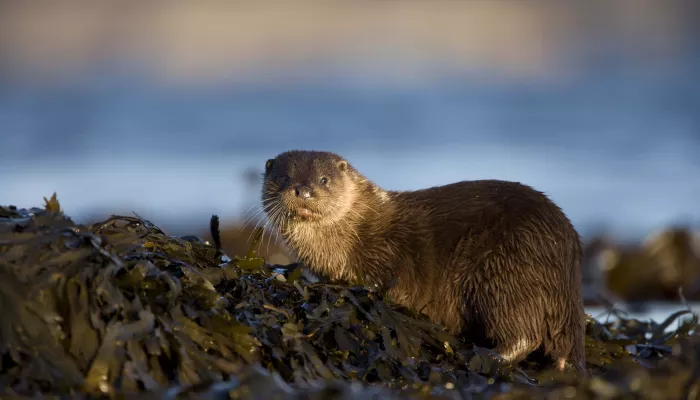About
The elusive otter is one of our top predators, feeding mainly on fish (particularly eels and salmonids), waterbirds, amphibians and crustaceans. Otters have their cubs in underground burrows, known as 'holts'. Excellent and lithe swimmers, the young are in the water by 10 weeks of age. Otters are well suited to a life on the water as they have webbed feet, dense fur to keep them warm, and can close their ears and nose when underwater. They require clean rivers, with an abundant source of food and plenty of vegetation to hide their secluded holts.
How to identify
The otter is a large, powerful mammal, with grey-brown fur, a broad snout, and a pale chest and throat. Otters can be distinguished from mink by their much larger size and broader face.
Did you know?
Seeing the signs of otters is far easier than seeing the animals themselves. Along riverbanks and waterways, look for five-toed footprints (about 6-7cm long) and droppings or 'spraints'. Otters leave spraints in prominent places, such as fallen trees, weirs and bridges, as 'scented messages', helping them to find mates and defend territories. They contain visible fish bones and have a distinctive, pleasant smell, reminiscent of jasmine tea!

